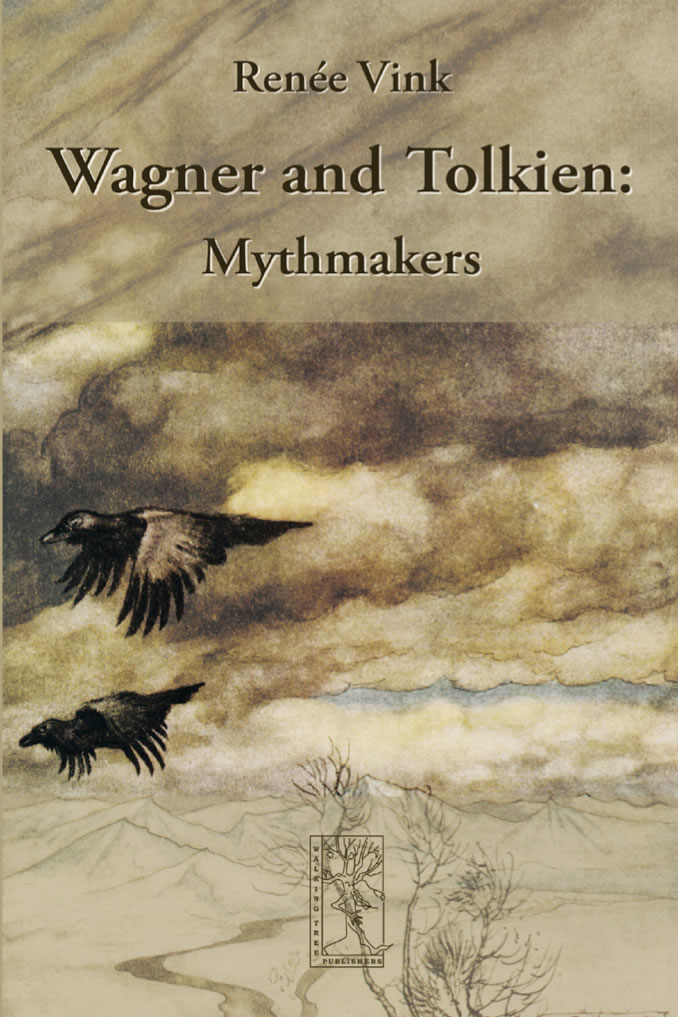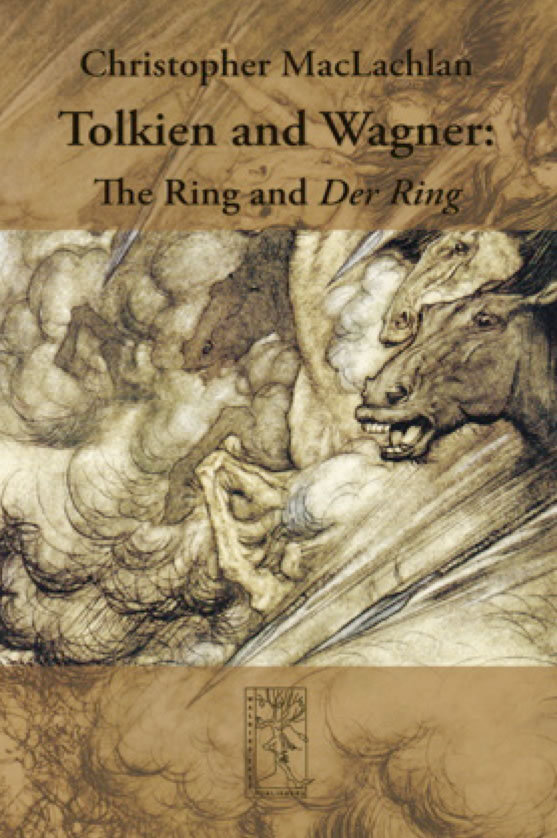Wagner and Tolkien: Mythmakers by Renée Vink (11.07.12 by Pieter Collier) -
Comments
I recall the reaction by Renée Vink and today we can read the answer. I'm happy to announce Wagner and Tolkien: Mythmakers.
"Both Rings were round and there the resemblance ceases", wrote J.R.R. Tolkien about the rings in his epic The Lord of the Rings and Richard Wagner's opera cycleThe Ring of the Nibelung. Or did he? The answer is not as straightforward as many Tolkien fans believe, whether they agree with the statement or consider it misguided. Nor is the statement itself as transparently defensive as some Wagner buffs suggest.
Much has been said and written about Wagner and Tolkien, a subject that tends to generate a certain amount of heat, mostly due to the former's controversial status as Hitler's favourite composer. But until now the various, often contradictory opinions and the facts and perceptions on which they are based were rarely discussed at length or analysed in depth.
The publication in 2009 of tolkien's The Legend and Sigurd and Gudrún with its partly Wagnerian content reinforced the need for a systematic treatment of the subject. This book offers one.
There is more to both Rings than their common roundness, and the resemblance between Tolkien and Wagner goes beyond a Ring of Power and some narrative elements: they shared a number of preoccupations and interests - Nature, nation, the North, death and immortality, language and above all, myth. This is a book about the two great mythmakers of their times, and about what they have in common despite everything that separate them.
This is a book I just need to read and I secretly hope it will be read by many, including professor Tom Shippey. And who knows he sends us over a small review to put online here?! And there we would have it, the circle closed again - another ring to add to the collection!
About the author
Renée Vink was born in Amsterdam and studied Scandinavian languages at the Universities of Leiden (The Netherlands) and Göteborg (Sweden). She has been working as a translator from Swedish, Norwegian, Danish, English and German into Dutch since the 1980s, translating among other things the poetry in Tolkien's The Legend of Sigurd and Gudrún.
Being a long-time Tolkien fan and scholar, she has also published a number of articles in various Tolkienrelated magazines from 1982 onwards. Her other main interest is the work of Richard Wagner.
Author: Renée Vink
Publisher: Walking Tree Publishers
Publication Date: 20 Jun 2012
Type: paperback, 322 pages
ISBN-10: 3905703254
ISBN-13: 978-3905703252
Table of contents
Introduction
The Master and the Professor - Wagner and Tolkien
Part One, Two Round Rings
Chapter 1, A Conspiracy Unmasked?
1.1. A Ring of Power
1.2. Two round rings
1.3. How well did Tolkien know Wagner?
Chapter 2, Searching for Sources
2.1. A list of similarities
2.2. 'Faint and disparate echoes'
2.3. Common sources
Chapter 3, What has it got in its pocketses?
3.1. No
Birzer / Bratman / Spear / Müller / Scott Rohan / Ridpath
3.2. Yes
Hillard / Shippey / Haymes / Bayreuth and sundry / Ross, Kasper, and sex / The racism card, Schwartz & Arvidsson / Hate-speak
3.3. Deliberately
Hall / O'Donoghue / Spengler / 'Thief Tolkien'
Chapter 4, Other Approaches
4.1. The evils of power
Werner / Luke, and Ross again / What power? / Views of evil / Fear of the end
4.2. A poisoned imagination?
Chism and the poisoned sources / From myth to history
Chapter 5, Conclusion
Part Two, Myths, Fairy Tales and Endings
Chapter 6, Romanticism and Mythmaking
6.1. Introduction
6.2. National myths
Tolkien in England / Wagner in Germany
6.3. Modern myth
Chapter 7, Nature and its Defilement
Chapter 8, A World too Much? Fantasy versus (Stage) Drama
8.1. Myth and drama
Dramatic narrative / Faërian drama / Visual representation
8.2. Fantasy drama
8.3. Music, words and the invisible stage
Chapter 9, Tragedy, Elegy, Eucatastrophe
9.1. Tragedy versus comedy
9.2. Revolution versus restoration
9.3. The end of myth
9.4. The end of the world?
Chapter 10, Conclusion
Part Three, The Amateur and the Professional
Chapter 11, Sources and Resources
11.1. Pure and adulterated northernness
11.2. Sigurd versus Siegfried
Chapter 12, Language
12.1. Words, grammar and syntax
tolkien's archaisms / Attack and defence / Wagner's archaisms / Wordplay / Philological jests / Kennings
12.2. Alliterations
Stave rhyme rediscovered / Some technicalities / Wagner's verse / tolkien's development / Rhythm and patterns
12.3. Proverbiality
Chapter 13, Narrative Elements
13.1. The Ring and the Legend - correspondences
Introduction / From the beginning to Ragnarök / Baldr / The solar hero and the Saviour / Odin and Wotan
13.2. The Ring and the Legend - differences
Assorted differences / Characteristic choices / Half-brother and full brothers
13.3. Solving a conundrum: The ring at the core
The sources / The botched tradition / The ring of fire / Did they do it?
Chapter 14, Conclusion
Afterword
Bibliography
Index of fiction
General index
Tolkien and Wagner: The Ring and Der Ring Christopher MacLachlan
Tolkien famously rejected comparison of his Ring with Wagner's, though there is good evidence that Tolkien knew much more about Der Ring des Nibelungen than he let on after the publication of The Lord of the Rings. Analysis of that work from a Wagnerian point of view enables consideration of it in a new way.
By exploring the parallels between Wagner's Ring and Tolkien's, a fresh interpretation of Tolkien's work emerges, one that hinges on associating Gandalf with Wotan. Like Wagner's god, Gandalf has to find a way of solving the problems posed by the Ring and like Wotan he cannot succeed without other people.
When the plots of The Lord of the Rings (and The Hobbit) are examined in this way it becomes apparent how much they owe to Wagner's music-drama, and the role of Gandalf is opened to new explanation.
Author: Christopher MacLachlan
Publisher: Walkin Tree Publishers
Publication Date: 25 Feb 2012
Type: paperback, 252 pages
ISBN-10: 3905703211
ISBN-13: 978-3905703214
Spread the news about this J.R.R. Tolkien article:

